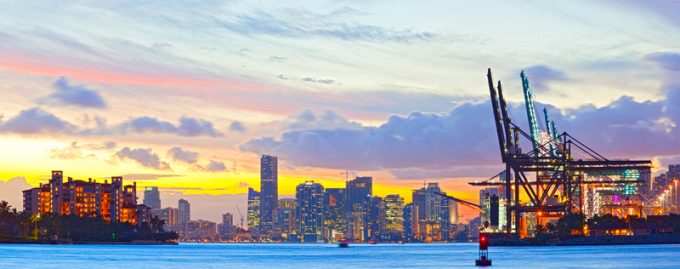Maersk u-turn as port congestion increases across Northern Europe
Just a few months after electing to swap its UK hub from Felixstowe to London ...

Politicians from Florida are talking-up the state’s ports as the solution to the worsening congestion threatening to snarl-up imports of seasonal merchandise beyond the selling window.
They are even flashing money to entice container carriers to change course for the Sunshine state.
Florida governor Ron DeSantis has issued stark warnings that children are in danger of going without Christmas presents, pointing to the rising number of ships sitting idle off the west coast – 82 as of this morning – waiting for ...
MSC Elsa 3 sinking – now the 'blame game' begins
Crew saved as MSC box ship, hit by 'monsoon' off Indian coast, sinks
After DSV 'cuts the cake' on Schenker acquisition, time for redundancies?
New services and reinstated blanked sailings boost transpacific capacity
Congestion fear as US west coast ports brace for transpacific cargo surge
$2.1bn E2open purchase will 'catapult WiseTech into a different dimension'
Houthis claim Red Sea safe for box ships not calling at port of Haifa
News in Brief Podcast | Week 21 | GRIs and European port congestion
Shippers hold their breath as Trump appeals court ruling that tariffs are illegal
Bad news for shippers as wave of transpacific rate increases continues
US importers stockpiling goods to avert autumn shortages amid tariff chaos
Shippers brace for rate rise as smart phones expected to drive air cargo market

Comment on this article